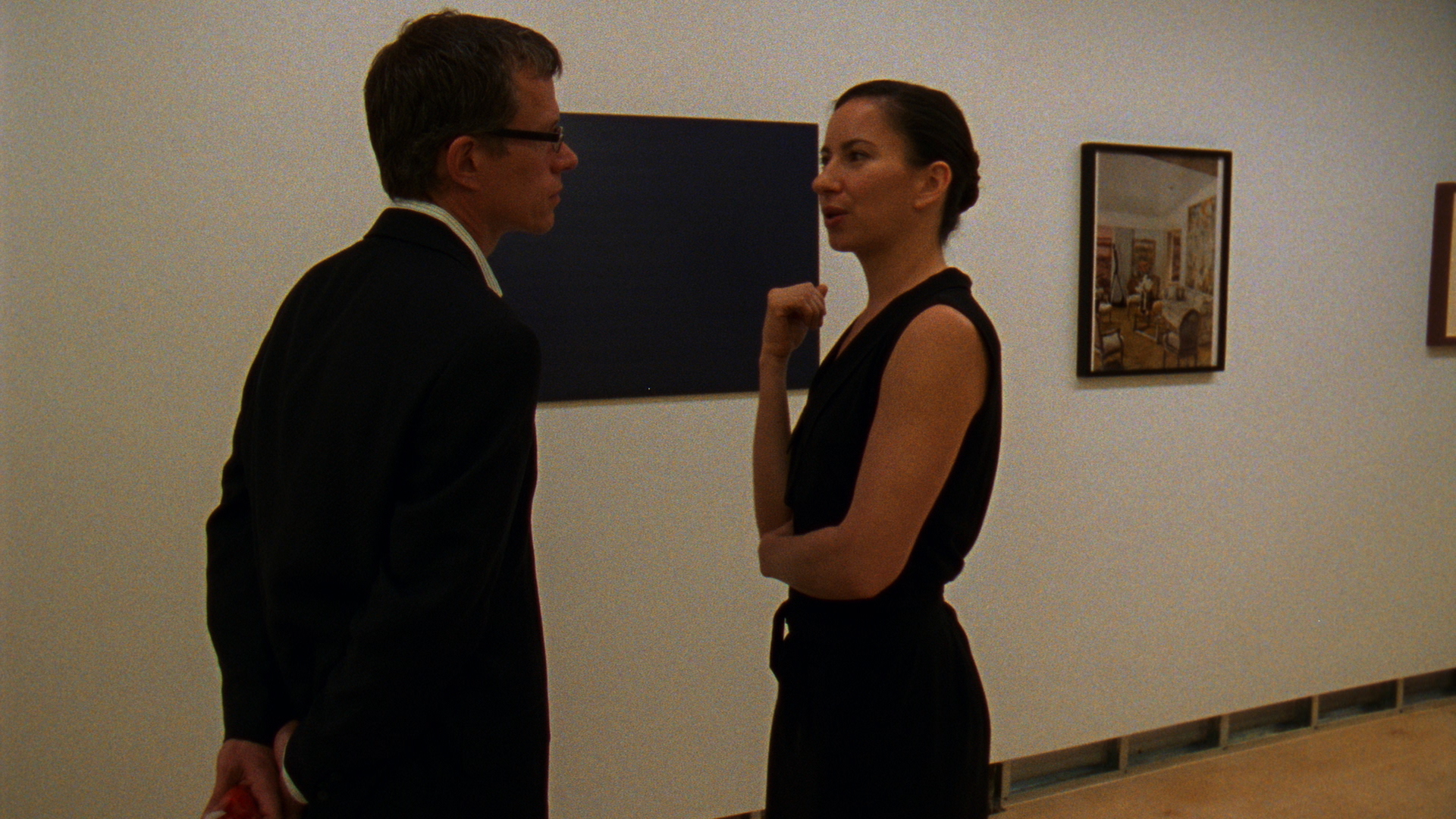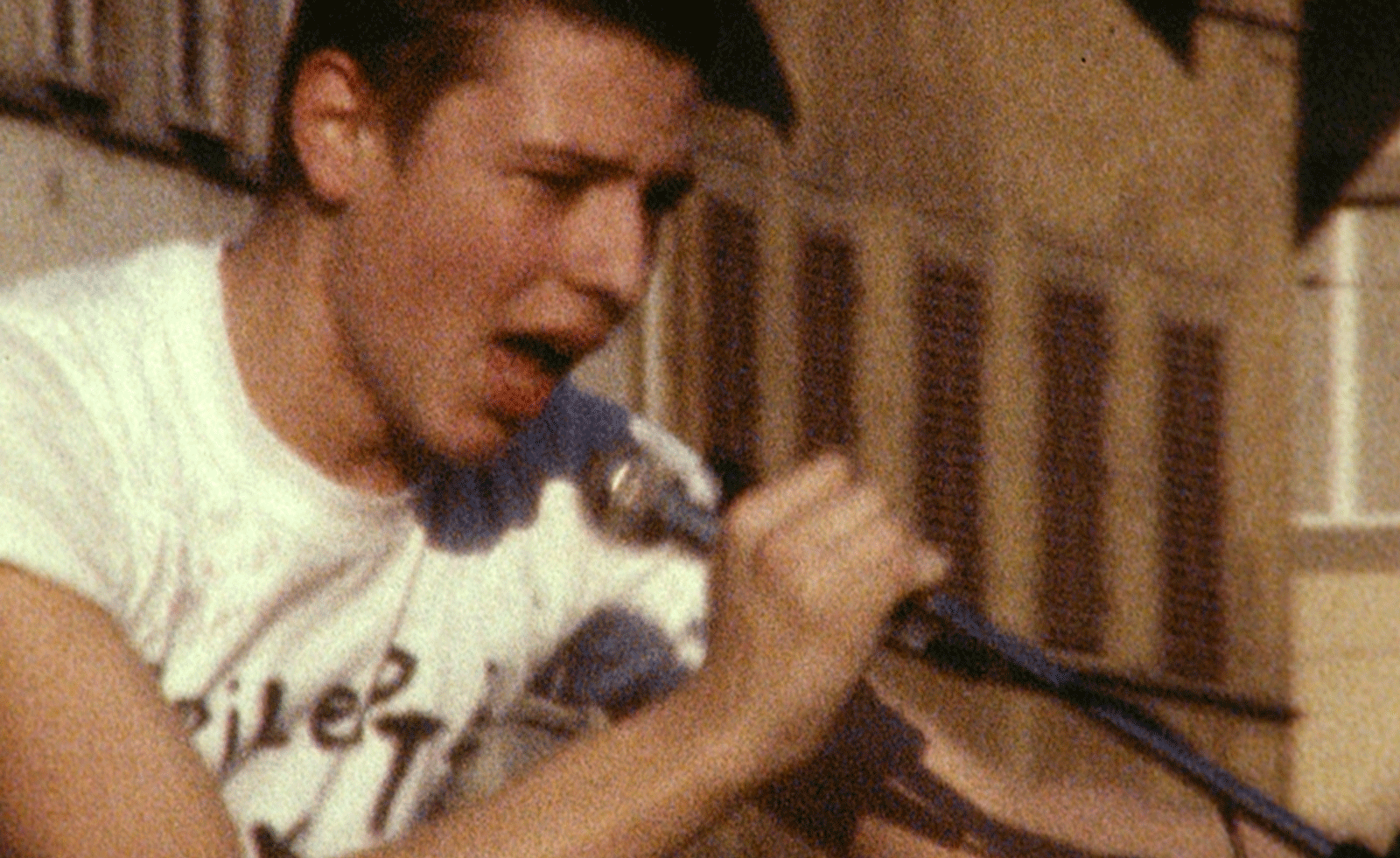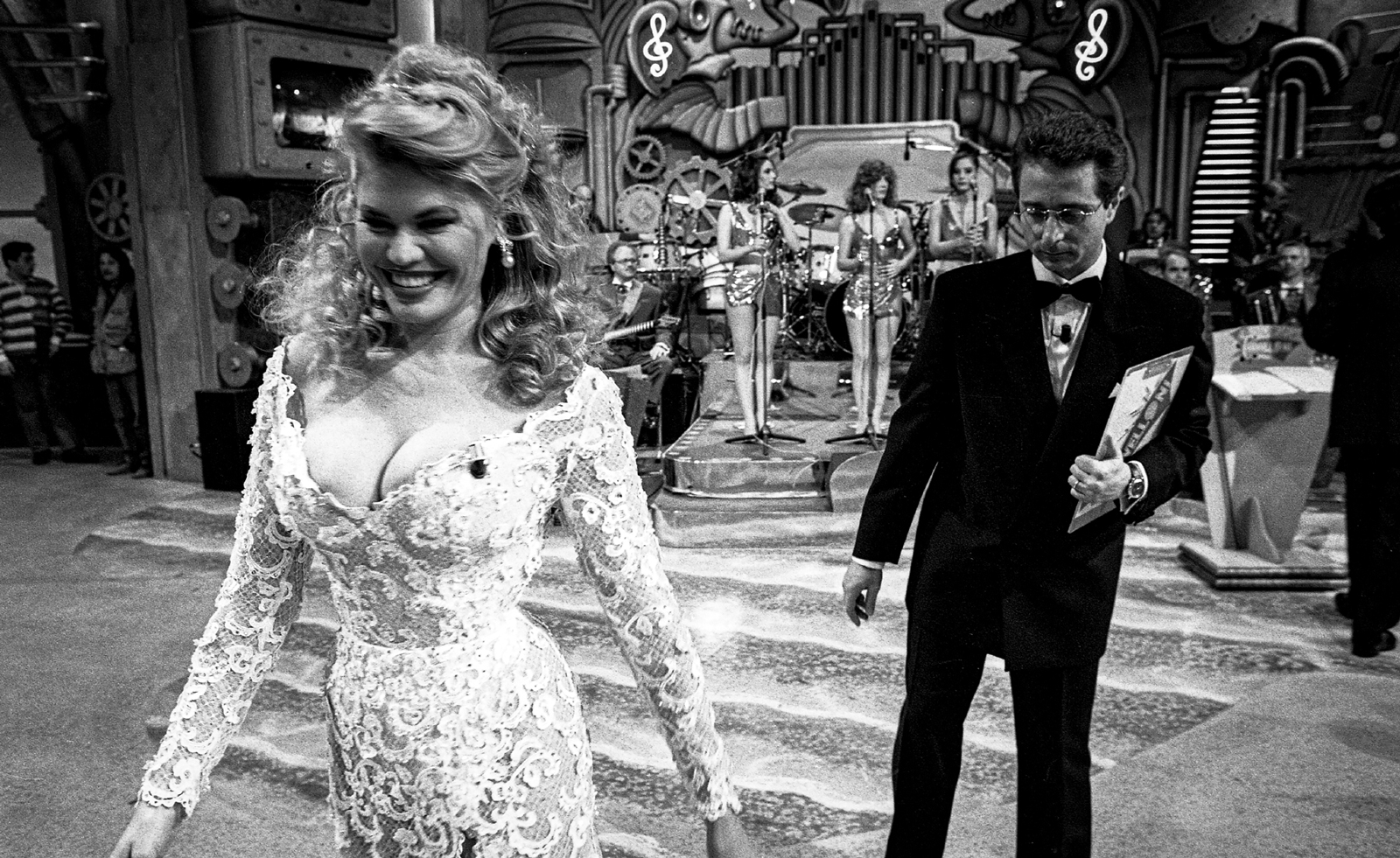‘I just don't like eggs!’: Andrea Fraser unpacks the art market
Artist Andrea Fraser’s retrospective ‘I just don't like eggs!’ at Fondazione Antonio dalle Nogare, Italy, explores what really makes the art market tick

‘I just don't like eggs!’ is an unusual title for an art exhibition. It is a quote taken from an English art collector, Janet de Botton, and used by artist Andrea Fraser in her seminal performance work ‘May I Help You’ (1991), which is currently echoing throughout the galleries of Fondazione Antonio dalle Nogare, in Bolzano, northern Italy, reverberating with questions that cut to the core of the art market's inner workings.
The retrospective, curated by Andrea Viliani with Vittoria Pavesi, brings together Fraser’s works made since the 1980s, focused on her research on art collectors, collecting and collections, broadly encompassing her archival impulse and investigations in psychoanalysis and sexuality, made approachable through her humorous lens.
Andrea Fraser, ‘I just don't like eggs!’ at Fondazione Antonio dalle Nogare
Walking up to Fondazione Antonio dalle Nogare, an eco-brutalist space built by architect Walter Angonese on a picturesque hillside, the sound of muttered words and heavy doors slamming resonates throughout the courtyard. ‘I spent a few hours recording in a cell block,’ Andrea Viliani explains. CCI Tehachapi at King’s Road (2014) is a sound installation recorded at the California Correctional Institution Tehachapi, a maximum security prison. Fraser intended to draw parallels and contradictions between freedom and confinement, between sets of society that tend to not intersect: ‘These are extremes in society, between economic divisions, racial divisions, geographical divisions.’ Index II (2014) is a graph overlaid onto the entry window, its bars reflective of confinement, ‘visualising the parallels between prison construction, museum construction, wealth concentration and incarceration in the United States’.
‘Who are these people in art galleries? Where do they get their money from?’
Andrea Fraser

Andrea Fraser, Jeff Preiss, Orchard Document: May I Help You?, 1991/2005/2006 (film still), Film 16mm (color, sound) transferred to high-definition video (loop). Production: ORCHARD and Epoch Films
Fondazione Antonio dalle Nogare serves not only as a public exhibition space and a repository for the eponymous founder’s collection, but also as a residence, where artworks coalesce with daily life. ‘The artworks circulating within these spaces serve as an interesting context for the exhibition,’ Fraser observes. It is in this intersection between private and public that her interests lie. Since the 1980s, Fraser has been analysing the workings of art marketing, peeling back its layers to question hierarchies and positions of power that in turn affect what is displayed in a museum. Four iterations of May I Help You play on loop, in which Fraser or actors perform monologues that oscillate between the veneer of salesmanship and alienation. ‘Culture is ordinary, culture is common,’ she explains. ‘Who are these people in art galleries, where do they get their money from?’ This question is at the crux of the exhibition: who decides what can be considered as an object of cultural value?
Antonio dalle Nogare describes Fraser’s approach: ‘The artist’s sociological and psychoanalytic approach becomes the lens for questioning the art world and highlighting its contradictions, projections, wills, and wishes.’ Fondazione Antonio dalle Nogare itself illustrates the impact of collectors on the establishment of a museum, where personal taste and financial backing determine what is exhibited; all collections have a different focus or goal.
The exhibition begins with an installation titled Aren't they lovely? (1992), exploring the mechanisms through which value is assigned and preserved within museum settings. A series of objects, including coins, medals, eyeglasses, photographs and souvenirs, a bequest of Therese Bonney, are on display in glass cabinets. Fraser found over 100 other objects from Bonney’s home in storage at the museum; Bonney had donated her entire collection to the University of California, Berkeley, but these objects remained uninventoried. The wall texts are museum curator notes, revealing the criteria applied to objects deemed worthy of being an artwork. ‘The wall texts are the most radical thing I've ever been allowed to do in a museum,’ Fraser explains. By reintroducing domestic culture and objects of only personal value alongside the works legitimised by museums into a public space, the artist short-circuits the value system proposed by the institution itself.

Andrea Fraser, Um Monumento às Fantasias Descartadas, 2003 (A Monument to Discarded Fantasies), mixed media (Brazilian carnival costumes). Exhibition view, New Orleans’ international art festival, Prospect.3, 2014-2015
‘The idea that someone supported Trump and was on the board of a museum was quite frustrating to me’
Andrea Fraser
Other works explore issues of plutocracy within art institutions. 2016 in Museums, Money, and Politics (2018) is a vinyl installation of pie chart analysis and breakdown examining the relationships between politics and art institutions in the United States of America. ‘The work started with the realisation that I had in 2016 whilst at MOCA (Museum of Contemporary Art, Los Angeles) at their Annual Gala. One of the members of the board told me that he had just become Trump’s campaign finance chair. The idea that someone supported Trump and was on the board of a museum was quite frustrating to me.’
Receive our daily digest of inspiration, escapism and design stories from around the world direct to your inbox.
Fraser researched 128 art museums, one from each federal state, during 2016 (the year Trump was elected), documenting the contributions to political parties or groups made by the boards of directors. ‘Board members are not necessarily patrons, however, they technically are because to be on a board you have to make personal financial contributions. These individuals are paying to play.’ The work highlights the undemocratic state of public institutions in the US, where those with expendable wealth are able to buy their way into roles of governance. In turn, museums and culture become saturated towards supporting certain groups or ideas over others.

Installation view of 'I just don't like eggs'
‘I just don't like eggs!’ underscores the stark disparities between social groups, their priorities and freedoms, exposing the harsh realities of governance by the wealthy. These findings prompt pressing questions: Who wields authority over what defines art? How are museum displays curated? What dictates the value of art? Why are certain pieces prioritised over others? Who reigns supreme – artist, museum, or collector? And what forces drive shifts in the art market? As Fraser's insights linger, these inquiries demand urgent exploration.
Andrea Fraser retrospective ‘I just don't like eggs’ at Fondazione Antonio dalle Nogare until 22 February 2025
Sofia Hallström is a Sweden-born artist and culture writer who has contributed to publications including Frieze, AnOther and The Face, among others.
-
 New tech dedicated to home health, personal wellness and mapping your metrics
New tech dedicated to home health, personal wellness and mapping your metricsWe round up the latest offerings in the smart health scene, from trackers for every conceivable metric from sugar to sleep, through to therapeutic furniture and ultra intelligent toothbrushes
-
 Out of office: The Wallpaper* editors’ picks of the week
Out of office: The Wallpaper* editors’ picks of the week'Tis the season for eating and drinking, and the Wallpaper* team embraced it wholeheartedly this week. Elsewhere: the best spot in Milan for clothing repairs and outdoor swimming in December
-
 How Stephen Burks Man Made is bringing the story of a centuries-old African textile to an entirely new audience
How Stephen Burks Man Made is bringing the story of a centuries-old African textile to an entirely new audienceAfter researching the time-honoured craft of Kuba cloth, designers Stephen Burks and Malika Leiper have teamed up with Italian company Alpi on a dynamic new product
-
 A forgotten history of Italian artists affected by the HIV-AIDS crisis goes on show in Tuscany
A forgotten history of Italian artists affected by the HIV-AIDS crisis goes on show in Tuscany‘Vivono: Art and Feelings, HIV-AIDS in Italy. 1982-1996’, at Centro per l'Arte Contemporanea Luigi Pecci in Prato delves into the conversation around the crisis
-
 Creativity and rest reign at this Tuscan residence for Black queer artists
Creativity and rest reign at this Tuscan residence for Black queer artistsMQBMBQ residency founder Jordan Anderson sparks creativity at his annual Tuscan artist residency. Wallpaper* meets him to hear about this year's focus.
-
 Photographer Mohamed Bourouissa reflects on society, community and the marginalised at MAST
Photographer Mohamed Bourouissa reflects on society, community and the marginalised at MASTMohamed Bourouissa unites his work from the last two decades at Bologna’s Fondazione MAST
-
 Ten super-cool posters for the Winter Olympics and Paralympics have just been unveiled
Ten super-cool posters for the Winter Olympics and Paralympics have just been unveiledThe Olympic committees asked ten young artists for their creative take on the 2026 Milano Cortina Games
-
 Remembering Oliviero Toscani, fashion photographer and author of provocative Benetton campaigns
Remembering Oliviero Toscani, fashion photographer and author of provocative Benetton campaignsBest known for the controversial adverts he shot for the Italian fashion brand, former art director Oliviero Toscani has died, aged 82
-
 Distracting decadence: how Silvio Berlusconi’s legacy shaped Italian TV
Distracting decadence: how Silvio Berlusconi’s legacy shaped Italian TVStefano De Luigi's monograph Televisiva examines how Berlusconi’s empire reshaped Italian TV, and subsequently infiltrated the premiership
-
 Louis Fratino leans into queer cultural history in Italy
Louis Fratino leans into queer cultural history in ItalyLouis Fratino’s 'Satura', on view at the Centro Pecci in Italy, engages with queer history, Italian landscapes and the body itself
-
 Triennale Milano exhibition spotlights contemporary Italian art
Triennale Milano exhibition spotlights contemporary Italian artThe latest Triennale Milano exhibition, ‘Italian Painting Today’, is a showcase of artworks from the last three years